#slavic history
Text

Perun the Thunderer, 2013 - oil on canvas
— Andrey Shishkin (Russia, 1960–)
In Slavic mythology, Perun is the highest god of the pantheon and the god of sky, thunder, lightning, storms, rain, law, war, fertility and oak trees.
#slavic#slavic culture#slavic folklore#slavic folk#slavic mythology#folk#folklore#slavs#art#artwork#art tag#folk art#artists on tumblr#oil painting#paintings#painting#oil on canvas#perun#perun deity#eastern europe#slavic polytheism#russian art#slavic history#oil art#not my art#drawing#artist on tumblr#artstyle
27 notes
·
View notes
Text
Time Travel Question 26: Ancient History XIV and Earlier
These Questions are the result of suggestions from the previous iteration.
This category may include suggestions made too late to fall into the correct grouping.
Please add new suggestions below if you have them for future consideration. All cultures and time periods welcome.
#Dʿmt#Time Travel#Ötzi#Bronze Age#Prehistory#The Bible#Siddhartha Gautama#Jesus of Nazareth#Religious History#Early Humans#Ötzi the Iceman#Textiles#History of Textiles#Ethiopian History#Slavic History#Lechitic Peoples#Lost Literature#The Tully Monster#Iberia#Spanish history#Ancient World
89 notes
·
View notes
Text
∗❀𓇣❁introducing you the south bohemian culture❁𓇣❀∗
ok so since noone really cares about south bohemian culture anymore, i'll to try to embrace it here on my blog, at least so that people know it exists. for the ones who don't know, Bohemia is an area in Czechia, that takes up most of the country. in czech, it is called 'Čechy'. now, you might notice the similarity between the words chechia and čechy - yes, my whole country is called after this part of it, even though it contains three regions: Bohemia (Čechy), Moravia (Morava) and Silesia (Slezsko). moravians and silesians take care of their culture pretty well in these trying times, but the bohemians, being the most influenced by the west culture, usually don't. so here's me, the tiniest person on tumblr, trying to do something about it! yay!!
❀first i'd like to say something about the name of this entire region. so according to an old, veery old myth, at first, all the slavic tribes lived in one place, 'v matičce Rusi' (in the mother of all, Russia). But the tribes and families started to lack space for their houses, animals and children, and thus two brothers, Čech and Lech, decided to go search for a new place for them. they went a long, long way, until they came to today's czechia, specifically to the mountain Říp (it actually exists). the forefather Čech climbed on the top of it, he looked around and saw, that they came in their promised land. it had beautiful mountains on the sides and fertile meadows in the middle, miles and miles of dark woods, and it was rich in milk and honey. and when he asked what it should be called, the slavs shouted in excitement that it should be called after the forefather himself. (i love this story a lot<3)
❀next post is going to be about the south bohemian region itself and it's parts! i'm planning on still posting art on this blog, but making it more representing of my slavic culture. i hope someone finds this interesting!
also sorry if i made any english mistakes :)
#slavic#rumour#old story#old rumour#slavic legend#slavic culture#čumblr#czechia#czech culture#bohemia#bohemian culture#south bohemia#obrozujeme#slavic representation#culture#history#slavic history#czech history#czech legend
61 notes
·
View notes
Text
Being Serbian and not religious is complicated enough, but being queer on top of that is even more complicated and that's concerning.
You see, Serbs have a very unique history and bond with religion. Serbia was under Ottoman rule from the middle of the 15th century up until the begging of the 19th century which is a long long time. Being a part of Ottoman empire meant that they wanted to assimilate you and there were many awful things they did due but i won't go into that rn. What was weird about Ottoman empire compared to other oppressors was that they never banned different religions. Obviously your life would have been easier if you became muslim but it wasn't like they killed you for not doing that as Romans did. So Serbian people became very close to the church and it bound all of the folk customs and holidays to itself and saved them which is a great thing and I'm so thankful for that but nowadays it's impossible to separate them. Every aspect of culture is somehow made christian and Serbian people have accepted orthodox christianity as a part of their national identity. You can't imagine how many people I've met who were confused about how can someone be Serbian if they're not christian. And most of them don't even believe in God or what christianity preaches, it's a national identity for them. They can't imagine what Serbs actually are beyond the religion and it's sad.
Other important thing is that all of the holidays and customs are pagan. They have been pagan and then Serbs got christianised in a quick way which means that they just masked the paganism in chriatianity and called it a day. There's practiced whichcraft in Serbian orthodox christianity and people refuse to call it that because it's a normal christian thing for them. There's prayers, healing watter and oils, plants, various rituals for various days (not just Easter and Christmas but even those are completely different than how other christians celebrate them), there's days where you don't work or do certain things so that you don't get God angry, there's future predictions by looking in a cup or reading in the coal or hot iron and various other customs and beliefs. And no one accepts them as anything but chriatian.
So yeah separation of religion and nationality is crucial for Serbian people to move forward but it's also very hard to do and it's beneficial to the government so no one is doing anything about it. Nationalism is unfortunately on the rise among Serbian people and obviously christianity is also. There's people who are ready to fight for "holy places" and Serbian (read christian) values. There's diaspora that's trying to reconnect with their nationality and they just fall into christianty and nationalistic propaganda and it's awful. Most of these people are cowards so I have hope they won't do anything stupid as starting another war but it's still concerning. When your national identity is so strongly bound to christianty a threat to christian beliefs is a threat to your nationality and you already know who falls into that "threat" category.
Also, pagan slavic spaces got infected by fascists and white slavic supremacist? It's like what happened in nordic pagan spaces. I know I know it makes no sense for south slavs to be fascists when ww2 fascists targeted them but you have to understand that these people aren't smart enough to understand that and are egoistic enough to twist things to better suit their beliefs.
That's why queer Slavs and queer folk art and queer history of slavs is so important and even revolutionary in times and places like these. And of course this post is not against christians. One of my favorite things are loving non bigoted christians, especially if they are queer themselves.
41 notes
·
View notes
Text

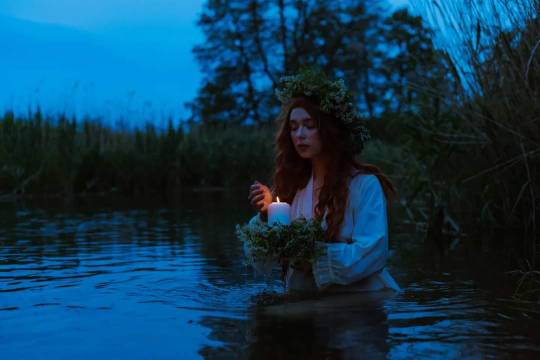
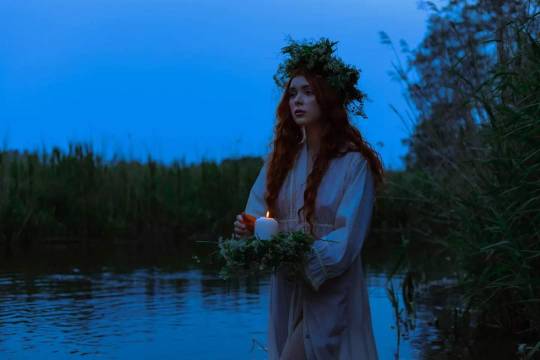
✨KUPAŁA NIGHT
Kupała Night is a Slavic holiday associated with the summer solstice of the Sun, celebrated during the shortest night of the year, which falls around June 21-22 .
In Anglo-Saxon countries it is known as Midsummer.
Kupalnocka is devoted primarily to the elements of water and fire, which have a cleansing power. It is also a celebration of love, fertility, sun and moon.
The Slavic customs and rituals associated with the Kupała Night were to ensure health and harvest for the saints. Bonfires were lit in which herbs were burned. Various fortune-telling and dances took place during joyful games.
Girls put wreaths with lighted candles into the currents of the rivers. If the wreath was fished out by a bachelor, it meant that she would get married quickly. If he was swimming, the girl wasn't going to get married soon. If, however, it got on fire, drowned or entangled in the rushes, it was foretold of this old age. They are probably the remains of the old spring magic rituals ending the enchantment of the "good beginning", referring to the soulful rituals and the coming harvest.
In some regions it was believed that you could not bathe in rivers, streams or lakes during the day until Kupala Day, while bathing after dusk or before sunrise cured various ailments, as water was then a healing element belonging to the moon.
The Kupala Night celebrations began with the ritual making of fire from ash and birch wood (some sources mention only oak wood). Jumping over the fire and dancing around was supposed to cleanse, protect against evil powers and disease. According to beliefs, aquarians, waterlines and drowners, as well as most other water demons, liked to lurk for summer-thirsty people who unreasonably take a bath before Kupała night. Only after this holiday, swimming in water became relatively safe.
Photos from Roskosh Model
#kupala night#summer#slavic folklore#kupala#slavic tradition#east europe#summer solstice#june#female models#slavic model#slavic women#russian folklore#polish folklore#ukrainian folklore#russian costumes#polish costumes#polish traditions#ukrainian tradition#russian tradition#slavic history#Slavic rituals#midsummer
41 notes
·
View notes
Text

The vinok is such a beautiful and colorful wreath, making anyone who wears one look just like a princess!👑
🇺🇦💐🇺🇦
#history#ukraine#fashion#vinok#kupala night#slavic history#ancient#traditional fashion#femininity#wreath#ukrainian history#girly things#flowers#cottagecore#ivana kupala#romantic#womens history#soft girl#ukrainian culture#traditional culture#christianity#slavic#ancient history#clothing#girlhood#nickys facts
40 notes
·
View notes
Text
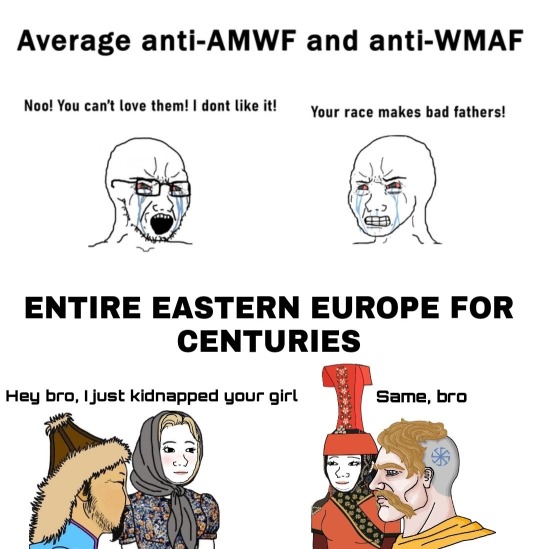
When two chads collide together
#funny#comedy#russian history#Russia#Slavic#Slavic history#ghengis khan#asian history#asian goddess#hot asian babe#beautiful women
7 notes
·
View notes
Text
Alright. Let's Talk Matthias Corvinus
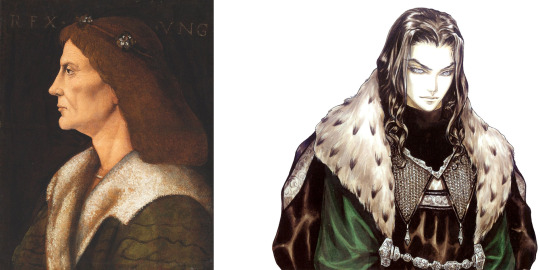
Okay. As the good guy now finally showed up in The lesser Evil, let's talk about Matthias Corvinus, because he is so weirdly important to Castlevania Lore, while also being completely ignored by it.
See, it is agreed upon that in quite a few ways Mathias Cronqvist, aka Dracula before he became Dracula, was based around Matthias Corvinus, who was King of Hungary between 1458 and 1490. Though very few aspects of Corvinus stayed when the character was written into Lament of Innocence outside of the name and some similarities in design, as well as a (claimed) fascination with the occult. Other than that, of course, Mathias in Lament of Innocence was mostly based on the depiction of Vlad Tepes Draculae from the 1992 Dracula movie by Coppola.
But, let's turn towards the historical character of Corvinus. Now, I will flat out state: Yes, I took some bits and pieces of what we know about him and basically designed an original character around it. But as I started to write the story, I looked a lot into who was ruling what bit of land and how were politicsgoing in Europe at the time. Now, we already do know that the history in the Castlevania Lore will differ in two ways: For one, the King of Wallachia is definitely dead and there is no successor (we see that in season 4), and, two, said King was very probably not Vlad Tepes Draculae, as I do assume there are no two Vlad Tepes running around at the same time. 😅 We can, however, assume that Corvinus still is the King of Hungary, which had a direct border to Wallachia at the time. Historically speaking, Vlad Tepes and Matthias Corvinus were uneasy allies in the fight against the Ottomans, which was going on at the time in question (though technically speaking it went on for a long long time after). But, also, Corvinus was having a war with Bavaria-Austria at the time over some parts of Austria and Bohemia, which Corvinus claimed should be part of Austro-Hungary. The entire issue about the Austro-Hungarian Realm is another thing, that stretches through history and brought a lot of conflct over the centuries.
In this case specifically, it just had happened, that there had been revolts against the clergy and the power of the Holy Roman Empire in Bohemia and even though it was revolts, it turned out that it was hard to quell based on the fact that the revolting folks had literally outgunned everyone else. They had guns, everyone else did not. And they knew how to tactically use them, too. So Austria and the HRE were struggling to suppress the revolts and asked Hungary for help. Hungary basically said: "Fine, but we gonna talk about those pieces of land that should be Hungarian." And yes, they suppressed the revolt, but in the end Hungary did not get that land, hence they had a war. And yes, Hungary went for two-front-war (against Austria and against the Ottomans), because Hungary had something nobody else had: A standing army of professional soldiers, compared to the other armies, that were mostly armed peasants.
Now, of course, those conflicts have probably changed through what has happened within the series. Namely: The entire Ottoman-Wallachia-Hungary conflict was very probably broken up, given that the night creatures did not give a flying fuck about who they killed and I do assume that both the Ottomans and the Hungarians withdrew from Wallachia, to try and secure their own lands against the night hordes. And while we do not know how far Dracula's armies did get, we do know that they at least made it to Austria, based on Carmilla's words at the beginning of season 3. Which also makes me think, that the Hungarian Black Army did loose at least some of their 19 000 men to the night hordes. Which might lead to them trying to find a way to fill up their ranks again.
Which is where the claims (that are not quite proven historically) about Matthias Corvinus being fascinated by the occult come into play. I decided to just run with it and have him hence be quite open to Bluebeard coming in and offering him a magic army. Especially as Dracula has now established the might such an army might have. So, yes, our dear king is playing with forces he does not quite understand. But I guarantee you, he will be an important character in this. 😊

This is how he looks in Lesser Evil :)
#castlevania#castlevania fanfiction#castlevania netflix#matthias corvinus#mathias cronqvist#vlad dracula tepes#slavic history#european history#15th century#the lesser evil
38 notes
·
View notes
Text
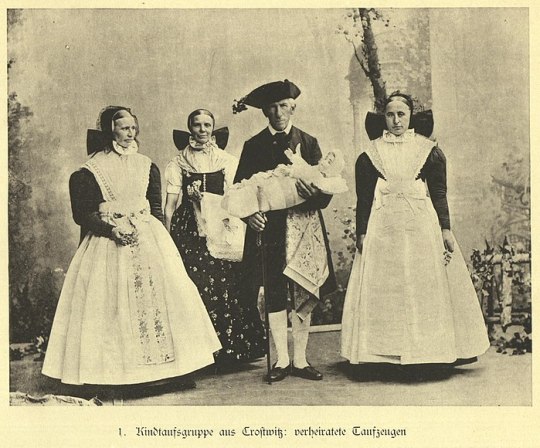

Married and unmarried baptismal witnesses/ godparents - Catholic Upper Sorbs of Crostwitz / Chrósćicy.
#lusatia#europe#Slavic culture#German culture#catholiscism#Sorbian#Hornjoserbja#hornjoserbšćina#Upper Sorbian#Łužica#Rjana Łužica#Slavic#European ethnicities#european minorities#slavic history#German history#historical photos#Old photos#Archive#file: culture#file: history
17 notes
·
View notes
Text
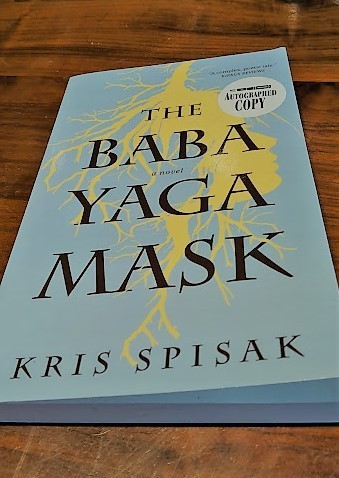
The Baba Yaga Mask by Kris Spisak
I loved this debut novel by Virginia writer Kris Spisak.
In essence a sister story, and tribute to family and generational history, this multi-voiced narrative immerses the reader in Ukrainian culture and history, as well as modern Hungary and Slovakia. We are taken on an international game of hide and seek which uproots the characters as well as secrets and treasures from the past.
I have to admit, I have met the author/editor, who also has published non-fiction books including Get a Grip on Your Grammar. When I learned she was writing a fiction book, and that it referred to the legendary Baba Yaga who has fascinated me since I was young, I bought it without learning anything else. This is not a baba yaga story, and yet it is, because her image as well as her spirit permeate the story, just as the legend has in history. I have been reading and learning more about Ukraine this year because of the invasion and attacks. I have also been looking into my own family history and learning more about my Slavic heritage. I was not actually expecting this book to be connected to so much of that and was pleasantly surprised. It was written before the invasion in February 2022, so none of that is addressed. One can feel the tension building though, even in the brief time the characters spend in Ukraine.
Spisak clearly loves language and her story is nearly poetic in many passages. She brings the three women whose stories are told to life, with deep third-person pov, as well as the settings. I honestly felt like I could picture and imagine being in these amazing faraway lands I will probably never see. And I could feel the sisters' physical and emotional journeys as they race across countries seeking their grandmother and finding so much more about themselves and their family. I laughed; I cried; I learned. Brava!
#novels#my pic#Baba Yaga#book review#fiction#Ukraine#Slavic history#sister story#world war 2 history#bookblr#books and reading#women's fiction
2 notes
·
View notes
Quote
But what benefits would the Slavic people derive by the formation of a mighty Slavic empire? — This would indeed be advantageous for the states [composing the empire] but not for the proletariat, only for the privileged minority — the clergy, the nobility, the bourgeoisie — and probably for some intellectuals, who because of their diplomas and their alleged mental superiority feel called upon to lead the masses. In short, there is an advantage for some thousands of oppressors, hangmen, and other exploiters of the proletariat. As far as the great masses of the people are concerned, the vaster the State, the heavier are the chains and the more crowded the prisons.
Michail Bakunin, Statism and Anarchy
#pan slavism#slavic#cossack#nato#michail bakunin#bakunin#1873#bakunin 1873#statism and anarchy#theory#philosophy#slavic history#politics#anarchy#mikhail bakunin#mihayel bakunin#mihail bakunin
5 notes
·
View notes
Text

Killing of Iurii Glinskii, from Litsevoi letopisnyi svod XVI veka: Russkaia letopisnaia istoriia, book 20, 1541–1551 gg. (Moscow: AKTEON, 2011), 347. Reproduced courtesy of AKTEON.
The killing of Prince Iurii Glinskii
"Two days after the fire which had claimed 15 thousand souls, the tsar and grand prince came to visit Metropolitan Makarii in Novoe, and the boyars came with him. Hostile rumors began to circulate, alleging that through means of sorcery a human heart had been taken out and soaked in water and then that water was sprinkled around the city, and because of that all of Moscow burned.
The tsar and grand prince ordered the boyars to conduct an investigation. The boyars came to the square in front of the Dormition Cathedral and gathered the taxpaying townspeople (chernye liudi) and began to question them: “Who set fire to Moscow?” They began to claim that “Princess Anna Glinskaia (the tsar’s maternal grandmother), with her sons and [their] men, had worked sorcery (volkhvovala): she took out a human heart and put it in water and went riding around Moscow with that water and sprinkling it, and because of that, Moscow burned down.”
Because of the enmity between them and the Glinskiis, the boyars riled up the townspeople. And they seized Prince Iurii in the church and killed him in the church, and then they dragged himout through the forward doors onto the square and into the city and put him in the marketplace, at the execution block.
(The incensed townspeople said:) “Your mother, Princess Anna, took flight in the form of a magpie and set the fire.”
-Witchcraft in Russia and Ukraine, 1000–1900: A Sourcebook (NIU Series in Slavic, East European, and Eurasian Studies)
0 notes
Text
ahoj pampelišky! hello dandelions! today, i would like to write something about
❊❀❁the 5 parts of the south bohemian region❁❀✽
each has its own rich and unique culture, cuisine and clothing. i hope you enjoy!
so first, here's a little map:

source here
the red texts are the names of the parts. (if you have no clue what or where this piece of land is or how big it is, here it is on google maps.)
so first, i would like to introduce you the moust southern region,
❀Doudlebsko
the name itself cannot be translated, as the land is literally named after a slavic tribe called Doudlebové (the Doudlebs), that lived here sometime in 6. - 7. century AC. theres even a fricking village named after them! they also lived in Slovenia and Ukraine.
The region was never very rich, 'cause there's quite a lot of mountains and stuff, so farming isn't too easy here. instead, there were lots of craftsmen - glassmakers, weavers, lace makers. people also cut wood since most of the region is even nowadays covered with forests. because of that, the traditional clothing is - compared to other regions - very simple. but im probably going to post lots of stuff about clothing in the future, so i dont want to get into that very much rn.
❀Blata
the name is literally translated as ,,the Muds" or better, ,,the Morasses". and its very honest tbh. the land is very flat, fertile and wet. there were lots of swamps in here, but the economy ruined the most of them (mostly in the 19. century) because they mined peat and used it in the glass shops as fuel.
the land was very rich compared to Doudlebsko, and that influenced the clothing. it is very rich and colorful, with lots of layers and embroideries.
❀Táborsko/Kozácko
A small, not very important region around the town Tábor. The clothing is pretty influenced by the middle bohemian culture, but still has its own unique traits. my favourite item from the traditional dress is a white apron with little embroidered red flowers.
ok im pretty tired already, so im going to write abt the other parts later. id also like to tell you a few cute czech idioms soon :)
anyway
have a sunny day☼
byee♡✽
#čumblr#obrozujeme#slavic history#slavic representation#slavic culture#slavic#czech culture#bohemia#bohemian culture#bohemian#south bohemia
58 notes
·
View notes
Text
I am going to begin beating people with a bat if I see one more person somehow fuse esoteric nazism with just ANY SLAVIC SUBJECT. LIKE MY BROTHER IN CHRIST. STOP FLOODING THE TAGS WITH YOUR WEIRD HISTORICAL FANFICTION. At least when Hetalia invades history tags we get good art out of it. This just puts weirdly designed swastikas everywhere and makes it harder for me to backtrace things. My god
0 notes
Text
youtube
1 note
·
View note
Photo
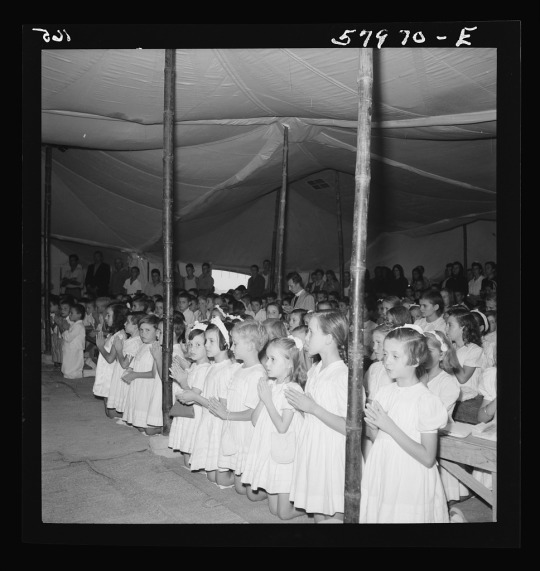



UNRRA's biggest #refugee camp in the Middle East.in #Egypt
Building #Yugoslavia in the Sand? Dalmatian Refugees in Egypt, 1944–1946:
(During the last years of the Second World War, some 30,000 Yugoslav refugees found shelter in the Egyptian desert from the German occupation of Dalmatia. In the camp El Shatt, the Partisan movement, the nascent UN, western aid groups, and the British Army worked together to take care of the refugees and also to negotiate future relations. The Communist Party, with victory in Yugoslavia in sight, sought to showcase its ability to organize and motivate its future citizens. Thus, the camps in Egypt became a testing ground for state-building back home. The article will explore the tensions that emerged between the self-confident Partisans, the suspicious British and UN officials, and the refugees, who experienced the end of the war in the Egyptian desert.)
https://www.cambridge.org/core/journals/slavic-review/article/building-yugoslavia-in-the-sand-dalmatian-refugees-in-egypt-19441946/4088E6E6287587AC3477CB624B0E5DB2
- Library of Congress collection
1 note
·
View note